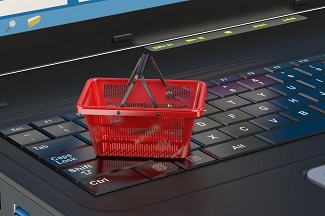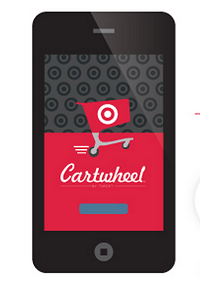CrossCheck is located in Sonoma County, California, also known as “wine country,” where we have almost 500 commercial wineries and over a thousand grape growers.
If a winery business model is studied, one might conclude that it is “unworkable” because of costs incurred by the three-tier distribution system that was mandated by the Department of Treasury Alcohol Tax Unit after Prohibition (now called the Alcohol and Tobacco Tax and Trade Bureau or the TTB). In some states, the three-tier system means wineries must sell to distributors that sell to retailers and restaurateurs that sell to consumers. Adding two unnecessary tiers between the winery and the consumer translates to less profit for the winery.
By the time a winery pays for grapes (or the cost of owning and managing vineyards), destemmers, presses, tanks, barrels, bottles, corks, labels, labor and marketing, it is generally difficult to make a quality bottle of wine for under $15, and even more difficult to sell one at a profit between $15 – $50. About 20 years ago, however, California wineries adopted an early form of ecommerce that has proven to be their salvation. It is called the “wine club.”
Successful Winery eCommerce
First, states had to agree to let their residents receive wine shipments from other states. This meant new legislation had to be proposed and passed in the state legislatures (six states still prohibit wine shipments from out of state).
Now consumers can go on line, join a wine club, and get wine shipped to them as long as they are not in one of the “felony states.” The winery doesn’t discount single-bottle purchases; they will still sell it at the MSRP, but instead of making perhaps one or two dollars profit for a $20 sale, they might make 10. This enables a winery to make a profit even if they are only selling a few thousand cases each year. The wine club has been an outstanding success while wineries such as Williams Selyem have been on allocation for years. You literally have to know somebody there to get a bottle or get on the waiting list!
More eCommerce Players
 eCommerce has proven to be successful in other business models as well. US retail ecommerce grew to $89 billion in Q4, 2015, a 14.7% increase over the same period in 2014 according to the US Census Bureau. For all of 2015, total retail ecommerce sales was $342 billion, 14.6% higher than 2014. This is a big number. But let’s not get carried away: it is still only 7.3% of total commerce, considerably less than 10%.
eCommerce has proven to be successful in other business models as well. US retail ecommerce grew to $89 billion in Q4, 2015, a 14.7% increase over the same period in 2014 according to the US Census Bureau. For all of 2015, total retail ecommerce sales was $342 billion, 14.6% higher than 2014. This is a big number. But let’s not get carried away: it is still only 7.3% of total commerce, considerably less than 10%.
Nevertheless, retailers are devoting enormous energy and resources to ecommerce, but it takes more than a compelling website, properly located and stocked warehouses, and speedy deliveries to be successful. One big problem is fast and accurate fulfillment. The issue is magnified when you are receiving thousands of orders per hour, have tens of thousands of SKUs, and process millions of packages every year. Typically, the retailer needs to use a third-party delivery service such as UPS, which delivered over 300 million packages in 2014 (14.3 million per day) or DHL, Fedex or USPS.
Amazonian eCommerce
Let’s get real: in the world of ecommerce, there is Amazon and there is everyone else. Amazon is a juggernaut — it is perhaps the only company where the revenue growth is exponential, but the net profit remains flat!
Remember when it launched Amazon Prime Day in July 2015? Many people thought this was a desperate move by Amazon because their market was saturated. Not so. They sold 34.4 million items in eight countries the first day it was offered. Now they even have Prime Now which offers one-hour delivery on some items. The firm shipped more than 200 million items at no extra charge during the last holiday season. It says that they have 47 million members who spend an average of $1200 per person on Prime. Can another retailer compete with Amazon in this arena? Amazon sells over 250 million different products (only 52 million are books). Let’s compare that to WalMart, which has about 4.2 million individual SKUs (even though its revenue is five times that of Amazon).
Amazon’s shipping cost is about 4.7% of sales. As Shudeep Chandrasekar wrote in a particularly cogent analysis in the e-zine Seeking Alpha, ”there’s a $400 charge to ship 30 orders worth $50.” No retailer can compete with this model, nor would they want to.
Testing the Waters of eCommerce
 Now you might think retailers can just throw together an ecommerce effort and see what happens. This is not a good idea. Retailers need to understand that customer expectations have changed. Consumers may have tolerated delays or poor service in the past, but not anymore. A study of a Dynatrace commissioned multinational Harris Poll conducted just before Black Friday showed that 51% of millennials shopping with tablets or smartphones would broadcast their bad experiences across social media. This is the worst thing that can happen to your brand.
Now you might think retailers can just throw together an ecommerce effort and see what happens. This is not a good idea. Retailers need to understand that customer expectations have changed. Consumers may have tolerated delays or poor service in the past, but not anymore. A study of a Dynatrace commissioned multinational Harris Poll conducted just before Black Friday showed that 51% of millennials shopping with tablets or smartphones would broadcast their bad experiences across social media. This is the worst thing that can happen to your brand.
One competitor is called Shoprunner which costs $79 a year. Sears has the ShopYourWay program for a $39 annual fee that offers free two-day shipping. Target has a loyalty program called Red Card that provides free shipping on Target.com purchases. In 2013, Target started working with Facebook to offer a program called Cartwheel, available via an app, which now has 20 million authenticated users.
Other potential competitors, typically ecommerce start-ups, have tried to compete with Amazon. One example is jet.com. Others such as Birchbox, Bonobos, and Warby Parker started online pure-play and later expanded to brick-and-mortar, proving that physical stores are still relevant and showrooming increases sales.
Conclusions
What can we conclude from all of this? First, ecommerce seems to be most successful with small-dollar items such as books, clothing or cosmetics. People do not buy living room furniture, or heavy items such as lamps and mattresses, on the web without seeing them in person or trying them out first.
Second, ecommerce is less than 10 percent of all commerce. That might double in the next five years, but I doubt if it will exceed 25% in the next five years — an eternity for retail logistics and IT planning.
Third, consumers will start with their tablet or smartphone the majority of the time, whether they are surfing the net or in the store, and they have to have a similar experience across the board (this is called “Omnichannel”).
Fourth, a big thing now is BOPIS, which means “Buy Online, Pickup in Store.” Consumers are short on time and patience, so they want to research, select, reserve and pay online, but they want to touch and see the product in person. Every retailer is trying to come up with the BOPIS model which works for them.
Finally, we know one of the most important things for a consumer is the payment experience. Merchants cannot tell consumers how to pay. Consumers have distinct preferences depending on what they are buying and where they are buying it. Cash and checks are still the largest forms of payment in terms of transaction count.
Credit can be very important in a sale, both secured and unsecured credit (for example, the credit card), but when the merchant is paying two-or-three percent in credit card interchange out of their gross margin, this becomes intolerable when the transaction is in the thousands of dollars.
The typical CrossCheck merchant is taking a high-dollar payment, or stream of payments, to be made in the future for goods or services delivered at point of sale. The best example would be the down payment on a car purchase in order to qualify for a lower interest rate on the car loan. CrossCheck facilitates the sale by allowing the consumer to write up to four checks to be deposited on an agreed-upon schedule over a 30-day period. The consumer pays no interest and does not have to apply for credit. We guarantee these checks, so the dealer does not have to worry about a check being returned. We help make a sale that may otherwise not have happened. To learn more click below.



